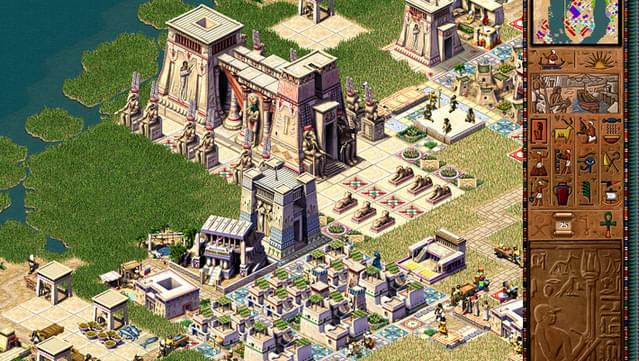
- PHARAOH CLEOPATRA GAME MAKING ESTATE BLOCKS LICENSE
- PHARAOH CLEOPATRA GAME MAKING ESTATE BLOCKS WINDOWS
The single room led to an open courtyard with a wall around it.
PHARAOH CLEOPATRA GAME MAKING ESTATE BLOCKS LICENSE
Reused in accordance with the Creative Commons Attribution 2.0 license © 2004 NYU Excavations at Amheida Photographed place: Kellis (Esment el-Kharab). A ramp was used to get into the house from the outside. Oftentimes, doors were built four feet or so up off the ground to prevent the dust from creeping in.
PHARAOH CLEOPATRA GAME MAKING ESTATE BLOCKS WINDOWS
Sometimes these roofs had reed canopies to create shade.Īll the windows and doors had reed mat coverings to help keep out the heat, dust and flies. People often slept on the roof at night because it was cooler than the enclosed room below. They used long grass and animal hair for the string.Ī ladder, mud brick staircase or ramp led to the flat roof. Inside the room were woven mats made of straw, perhaps a wooden stool or even a wooden bed with string pulled across it. This room was used for storage and napping during the day to escape the excessive heat. Those without much money often had only a one room house. The layout of an ancient Egyptian house was largely determined by whether the family was rich or poor, and if they lived in the city or the country. Reused in accordance with the Creative Commons Attribution 2.0 license - Recreation of a mud-brick house Layout of ancient Egyptian houses

© 2009 Iris Fernandez (used with permission) photographed place: (El-Qasr) Families often lounged, ate and slept on the roofs of ancient Egypt houses.

Not only did this most likely make the construction process simpler, but the flat roofs also offered a welcome respite from the burning Egyptian sun. They would transport the clay and mud, make the bricks and also transport the dried bricks to the building site.Īlmost all ancient Egypt houses were constructed with a flat roof. Slaves and children as young as four were left to the menial job of making mud-bricks. It was used to support doorways, ceilings and steps. Wood wasn’t used to build the actual houses because of its scarcity.

Allowed to dry in the sun, mud-bricks lasted much longer than houses made of mud and papyrus, but rain still eventually eroded them. Mixing the clay/mud with water, they poured this mixture into wooden molds in the shape of bricks. This is when the ancient Egyptians discovered that they could create bricks out of clay and mud from the Nile’s riverbank. The Nile River flooded for three months every year and literally washed these houses away. After a while, however, people realized that this combination wouldn’t work. The oldest houses were built of mud and papyrus. History and Description of Ancient Egyptian Houses What were the ancient Egyptian houses made of?Įgypt’s intense sun and heat shaped how ancient Egyptians built their houses.


 0 kommentar(er)
0 kommentar(er)
